It’s hard to think of a phrase more closely associated with cleanliness than “brush your teeth.” When it comes to Mother Earth, though, good oral hygiene is a surprisingly dirty habit.
Table of Contents
About 1.5 billion toothpaste tubes are sent to landfills each year – enough to fill 50 Empire State buildings, according to Forbes. On top of that, the contents of many of these toothpaste tubes contain chemicals that many of us would like to avoid.
Though toothpaste manufacturers nixed microbeads when the FDA banned the insidious microplastics in 2015, many brands still contain PEGs (like PEG-6 or PEG-12) and polyethylene, which are petroleum-derived compounds. Although the CDC vouches for the safety of community water fluoridation, fluoride, toothpaste’s most famous active ingredient, is also on the avoid list for many families.
Further, the primary purpose of brushing teeth is to strengthen enamel and prevent cavities, and the bulk of evidence supports that mainstream fluoride toothpastes deliver doses of the chemical that are effective toward these ends.

Best toothpaste tablets

Best traditional toothpaste

Best charcoal-containing toothpaste
I usually use a fluoride-free toothpaste for daytime brushing because I’m more likely to drink or eat something shortly afterward, which will wash the stuff off my teeth (and, eek, down my throat) anyway. By using fluoride toothpastes at bedtime, I feel they have the best chance of doing their job – that is, snagging calcium and phosphates from my saliva and forcing them back into my teeth.
Looking for an eco-friendly toothbrush? Check out our top picks for toothbrushes that are gentle on Mother Earth.
Making the Switch to a Greener Toothpaste
Though I’ve made the switch to zero-waste laundry and dish detergents, compostable sandwich and garbage bags, bioplastic saran wrap, eco-friendly shampoo bars and a host of other sustainable lifestyle products, toothpaste has remained something of a final green frontier for me until recently.
However, I came to the conclusion that it makes little sense to continue using big brands that load their products with questionable ingredients and then package them in plastic tubes that are nearly impossible to recycle. It’s time to give some innovative eco-friendly toothpaste brands a shot.
I did some research and settled on trying three of the eco-friendliest, most promising-looking brands. Here’s what I found after personally testing all three of these brands at home in Miami.

Unpaste Tooth Tabs
Highlights: Zero-waste tooth tablets flavored with mint inside of a compostable packet, and shipped in a compostable mailing envelope.
- Fluoride option is available for those that want it
- Mailed plastic-free in a compostable envelope
- Made from natural ingredients
- Great for travel
- Mint flavor could be stronger, and the baking soda flavor a little weaker
Deciding to try Unpaste’s zero-waste tooth tabs with fluoride was an easy choice for me, since few eco-friendly toothpaste manufacturers include fluoridated options. (Unpaste also makes fluoride-free tablets.) I ordered the tablets from Well Earth Goods and was enthused to find that the compostable packet of tooth tablets arrived in a plastic-free, compostable mailing envelope. I can’t tell you how many times I’ve ordered an eco-friendly product, only to have it arrive in a hopelessly wasteful plastic bubble wrap envelope. It’s a bit maddening. By contrast, this eco-friendly product was off to a truly clean start.
I took one out, then emptied the remaining tablets into a small Mason jar I had on hand for easy storage in the medicine cabinet. This was the first toothpaste tablet I’d ever tried, so I read the brief instructions carefully prior to beginning.
As advised, I put the small tablet into my mouth and chewed it a few times to break it up. The initial flavor was chalky, and then suddenly very tangy – the baking soda came through fiercely – and then the paste began to tingle my gums in a way that was not entirely unpleasant. Combined with my saliva, the tablet soon turned into a thin liquid rather than a paste. I brushed this vaguely mint-flavored baking soda liquid around my mouth for a few minutes, then spat and rinsed my brush.
Our verdict
The tablets did their job – my teeth felt cleansed and my mouth had a fresh feeling, though I wished the tablets were slightly bigger to better coat my teeth. I also would have preferred a stronger mint flavor and a less-obvious baking soda taste, but I was still happy overall with the product.
While it doesn’t feel like my number one choice for everyday use (the $13 price tag for a month’s supply doesn’t help), these sustainable, mess-free tablets are an ideal product for travel, and I’ll definitely keep a tin of them tucked in my purse for brushing on the go.
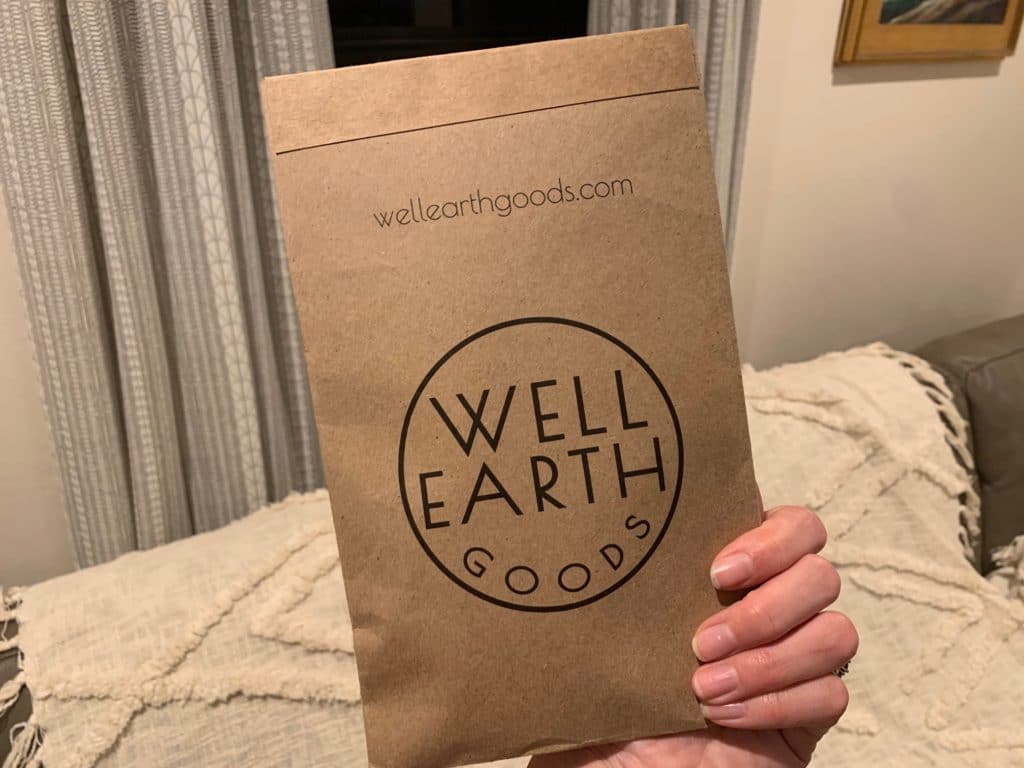

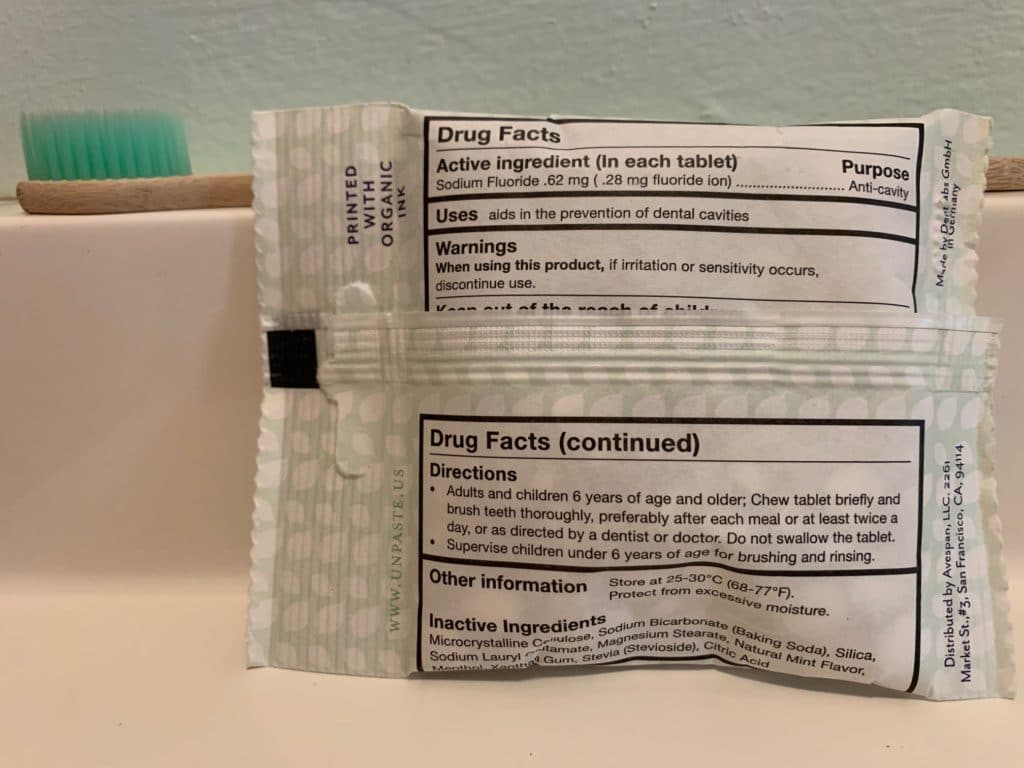





Davids Whitening + Antiplaque Premium Toothpaste
Highlights: Toothpaste with nature-derived ingredients that comes with a metal key used to help squeeze every last drop from the tube.
- Sent in recyclable metal packaging
- Offered in a variety of flavors, all made with naturally-derived ingredients
- Key that accompanies the product helps to get every last drop from the tube
- Affordably priced
- Mint flavor could be too intense for some, but we loved it
Davids Toothpaste is touted in eco-friendly circles for its recyclable metal packaging, which is what prompted me to give it a try. Its ingredients are nature-derived, and the company lists them in a way that is assuringly easy to understand. Here are the first five on the list to give you an idea:
Calcium carbonate (limestone abrasive), vegetable glycerin, purified water, sodium bicarbonate (baking soda), xylitol (birch derived)…
These terms sit much better with me than the ominous, mysterious and sesquipedalian words that make up most of the big brand toothpaste ingredients lists.
I chose the spearmint flavor because I was a nut for Wrigley’s Spearmint gum as a kid (which surely didn’t help with my cavity situation), but the company also offers herbal citrus peppermint, peppermint + charcoal and plain peppermint. They’ve also just launched a new paste that contains nano-hydroxyapatite, a synthetic version of a compound found naturally in our bones and teeth. It was developed by NASA for use in astronauts to prevent or reverse bone and enamel loss caused by space travel, and is widely considered safer and potentially more effective than fluoride for tooth remineralization. It wasn’t yet available when I did my eco-friendly toothpaste shopping, but it’s definitely next on my oral care shopping list.
When I unboxed the toothpaste, I was impressed to find a metal key inside the box, the purpose of which is to help the consumer squeeze every last drop of paste out of the tube. It’s much easier to use than the old-fashioned roll-by-hand method, which I’ve never had the patience for, and you can certainly reuse the key on other toothpaste brands if you decide to switch again.
This toothpaste possesses a winning combination of eco-friendly design, natural and non-toxic ingredients, intensely fresh user experience, and exciting oral health-promoting innovation, considering the recent launch of its Sensitive + Whitening toothpaste with nano-hydroxyapatite. At $10 for a 3-month supply, this brand is also a comfortable choice for green living enthusiasts on a budget.
Our verdict
As far as the brushing experience, I was impressed with Davids natural spearmint paste. The spearmint and peppermint oils had bright and strong flavors. People who are not into intense tastes might find them overwhelming, but I love a good shock to the palate, and Davids delivered on this front.
The paste was smooth on my teeth – it didn’t feel like brushing with a spoonful of gritty baking soda, even though sodium bicarbonate is a main ingredient. My teeth and gums were left feeling extremely clean, and the taste of mint lasted in my mouth for a good hour post-brushing.


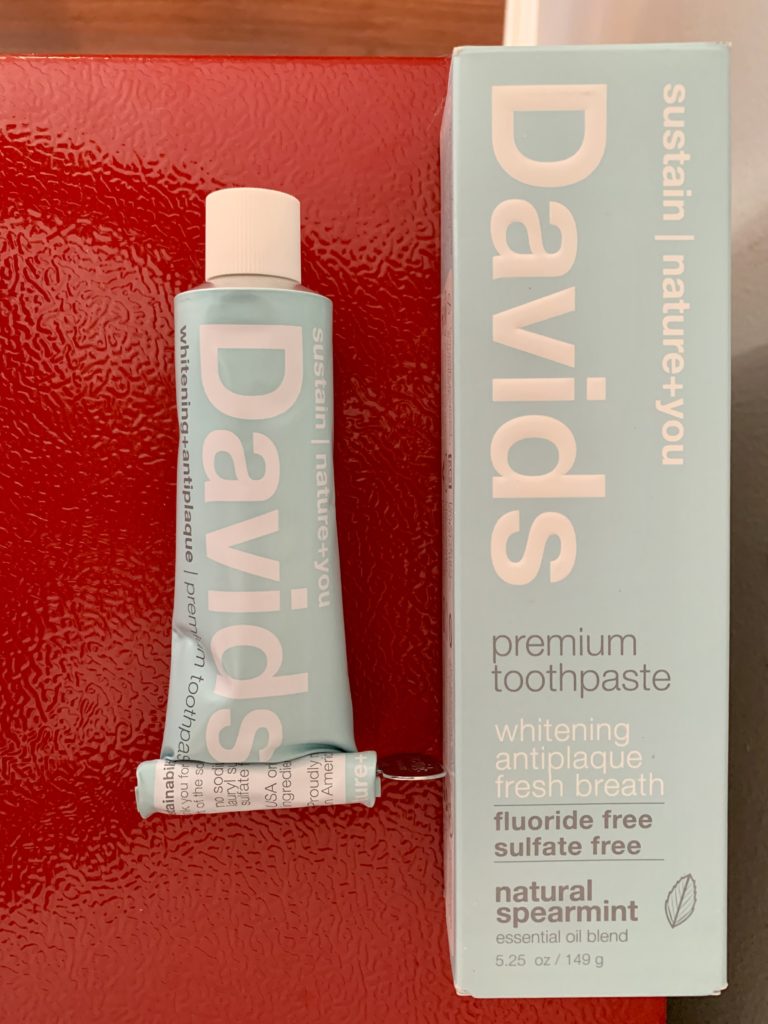

Hello Toothpaste Tablets with Activated Charcoal
Highlights: Charcoal-containing toothpaste tablets that taste great, spread well, but may leave a bit of a shocking surprise behind if you’re not expecting it.
- Shipped in plastic-free reusable or recyclable containers
- Kids’ flavors are available to help get kids motivated to brush
- Larger tablets ultimately make for a more pleasant experience
- The presence of charcoal can leave messy remnants, and a bit of an unpleasant surprise if you’re not used to it
There were so many charcoal-containing natural and eco-friendly toothpaste brands on the market, I couldn’t resist including one in my research. I chose Hello’s tablets because they come in a cute plastic-free reusable or recyclable container. I also favor the brand because they make fluoride-free watermelon-flavored kids’ toothpaste and mouthwash that get my 3- and 5-year-olds eager to brush.
When I opened the container, I was heartened to see that Hello’s tablets were larger than Unpaste’s. Now a pro at using toothpaste tablets, I popped one into the front of my mouth and began chewing with my front teeth. The texture was brittle at first, but soon became paste-like as the tablet fragments mixed with saliva. The flavor was pleasant – a nice mellow mint – and the tablet size proved adequate for distributing the toothpaste to all 28 of my teeth.
Then I looked in the mirror.
My teeth had turned blackish gray from the charcoal paste. The image was a bit shocking, like that of a rotting corpse come alive in a horror movie. There are no two ways to slice it – it’s an ugly sight. My first thought was that I would not want to use this product in front of my husband, or in a public place like a gym or airport bathroom. These tablets are for behind closed doors only.
Once I was done brushing, I spit out the gray sludgy paste into the sink and watched it swirl down the drain like an exorcised demon. I had a strong urge to rinse my teeth, whose crevices had retained a bit of the charcoal hue, but I wasn’t sure if a rinse would counteract the tablets’ oral health benefits.
Later, I noticed a bit of dried black powder in the corner of my mouth. The package claims that the tablets require less water and create less mess, but after rinsing the blackness from the bowl of my sink and thoroughly washing my face, I’m not certain that’s true. After reading further on the pros and cons of brushing with charcoal products, I have even more reservations about continuing to use this product.
While I laud Hello’s commitment to eco-friendliness, a charcoal-based toothpaste may not be the right fit for people with concerns about enamel erosion. While it may remove surface stains on teeth, charcoal may be too abrasive for use in regular brushing, some sources have speculated, as it could have deleterious effects on tooth enamel. That’s something I can’t afford to risk.
Our verdict
I would give Hello toothpaste tablets another try, but next time I’d definitely opt for the charcoal-free version. Either one costs about $8 for a one-month supply.

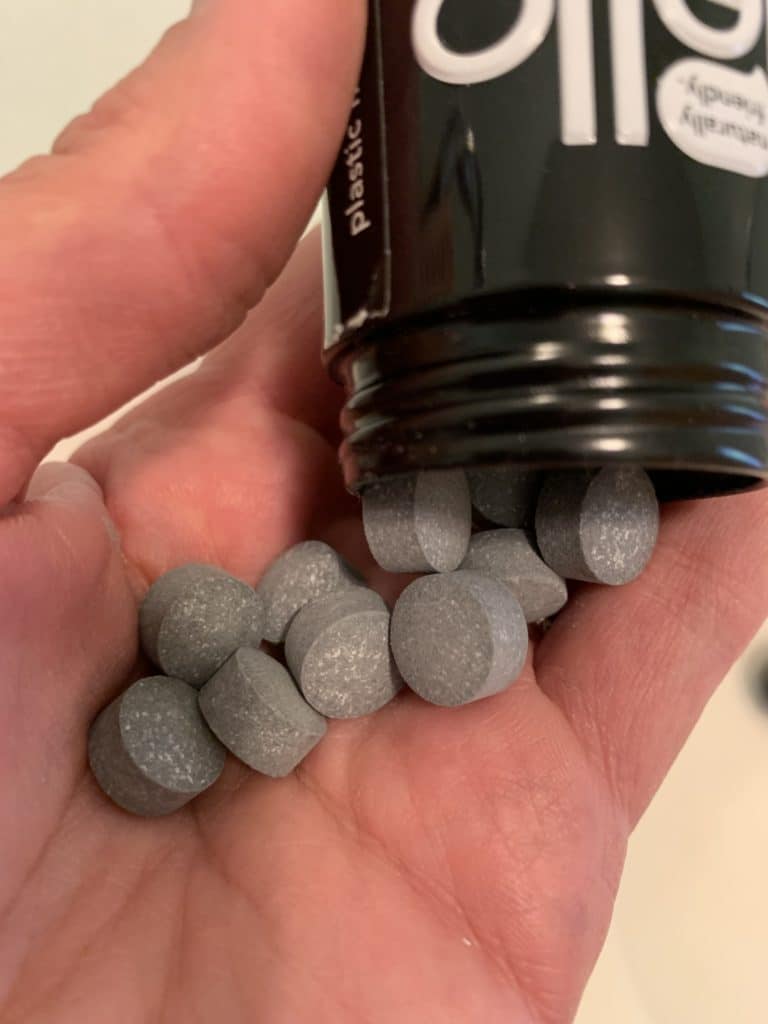
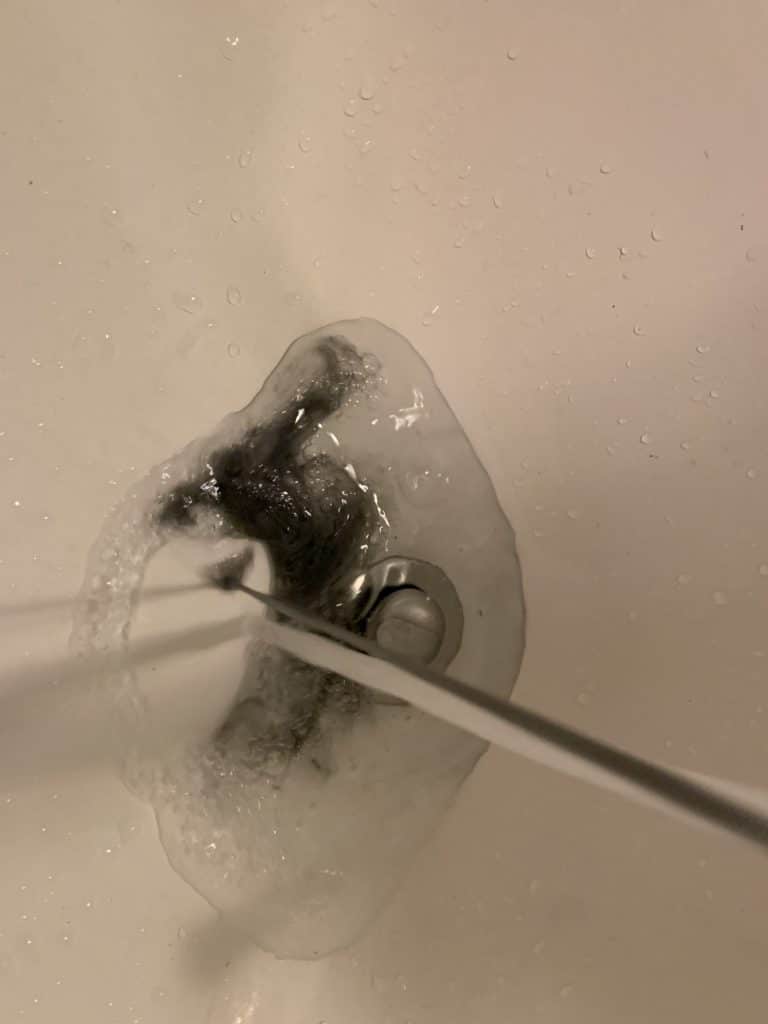

The bottom line
If you’re looking for an all natural toothpaste that offers a simple list of ingredients, and a manufacturing process that factors in the health of the planet, you can’t go wrong with the three brands I reviewed above.
Happy green brushing!